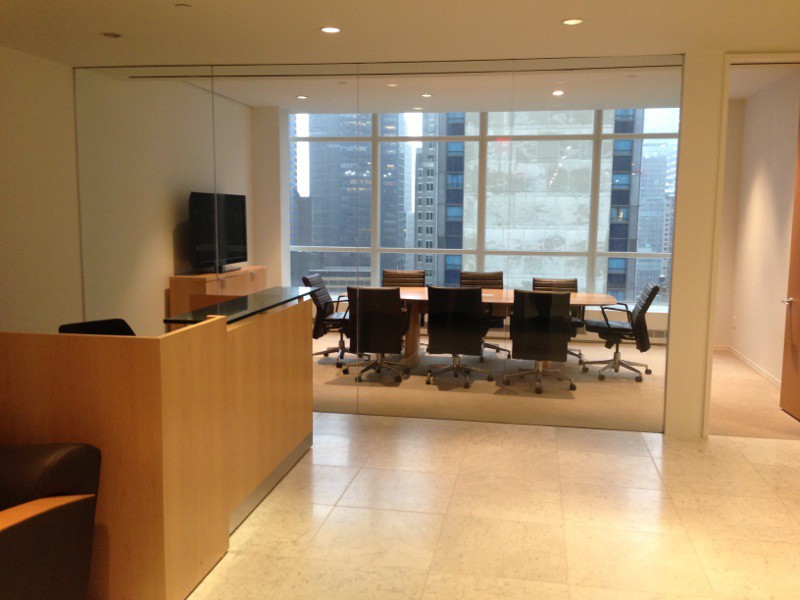
Lance Leighton
Founder – HedgeFundSpaces.com
New York State Licensed Real Estate Salesperson
This conversation occurs time and time again… A client (or potential client) tells us their wish list for office space and it usually includes the following statement… ”I want to sublease incredible office space, from a fund that has blown up. Ideally the space will be furnished with trading desks, have technology in place, high-end finishes and because it is a sublease it will be CHEAP”. That is a great description of what sounds like the perfect space, but unfortunately, they are few and far between. Since just about every small to mid-sized fund we meet with makes the same statement, there is obviously strong demand for this type of furnished, plug & play office space. Simple economics: If there is strong demand and limited supply when a unit does hit the market 1) it doesn’t last long and 2) it isn’t always going to be significantly less expensive.
Below are three reasons why a direct lease might be more appropriate than a sublease:
First and foremost, the statement “I want to sublease from a fund that has blown up” is flawed because you cannot sublease from a tenant that is out of business or going out of business: The “sub” in “sublease” references the subordinate nature of the sublease document. If the entity on the original lease with the building owner is no longer in business, or is in default under their lease obligations, then there is no company to sublease from. However, the space that was occupied by the fund that has blown up can be a great, low-cost, opportunity for an incoming, opportunistic group as it will ultimately be re-marketed on a direct basis by the landlord. HedgeFundSpaces.com monitors the market for these types of opportunities. When we hear about a fund that is shutting down, returning assets or is rumored to be downsizing, we immediately contact them and/or their landlord to see if it possible to make a direct deal and then offer those spaces to our clients. Additionally, we post those opportunities on this site – so be sure to check our blog on a regular basis. (Looking for built and furnished sublease space? Click here for our free search.)
If the tenant you are subleasing from defaults on their obligation, your tenancy is in jeopardy: It’s hard enough to predict the future of your own business, now try to predict the future of your sublandlord’s business. As a subtenant, you do not have a direct relationship with your landlord. Even though you live up to your obligations and pay your rent to the sublandlord, what happens if your sublandlord stops paying rent to the landlord? We all learned a lot in 2008 about being “too big to fail” and saw how quickly the world could change. When having this conversation, our client will typically say, “if my sublandlord defaults I will just make a deal with the direct landlord”. That is not always possible, and if it is, it will not be the aggressive, discounted deal you made when you subleased the space in the first place. What if a large tenant in the building needs space? What if the market has changed and rents are higher? The landlord is now in the position of power and will at the very least charge market rents, if not rental rates that are slightly above market knowing that you likely don’t want the hassle or expense of moving-out.
The terms of a sublease agreement can only be as good as the lease that it is subordinate to: Every company has different priorities, needs, and issues that are of importance. For example, a fund might require excessive electrical power, after-hours HVAC, roof rights for technology, supplemental air in an IT room, etc. As a subtenant, the terms that a sublandlord negotiated are the terms that a subtenant will need to live with. The landlord has no obligation to provide any services that were not contemplated in the original lease. Additionally, in almost all cases, expansion options, renewal rights and/or termination options are exclusive to the original tenant and are not transferable to a subtenant. Sometimes the sublease and assignment provision does not allow further subleasing of the space. That is scary. What if you outgrow the space you are subleasing? Without the right to further sublease the space you are a captive tenant and in a position where there is nothing you can do other than continue to pay your rent.
The above are only a few of the challenges of subleases and illustrate the reason that subleases MUST trade at a large discount to direct leases. The rewards need to outweigh the risks, and there are plenty of risks when subleasing space, especially from a “downsizing” hedge fund.
tags:
category:
recent posts:
When a landlord acquires an office building with an agenda to demolish or change the asset, they will oftentimes preface all new transactions with a termination clause. Typically, this provision…
BlackRock, Bank of America and Third Point had Midtown Manhattan's most notable new leases. There is no question that 2017 was a solid year for New York City commercial real…
The Importance of Working with an Exclusive Tenant Representative Oftentimes, tenants in the marketplace avoid an exclusive agreement with a single leasing broker. Much like a marriage, the fear of…